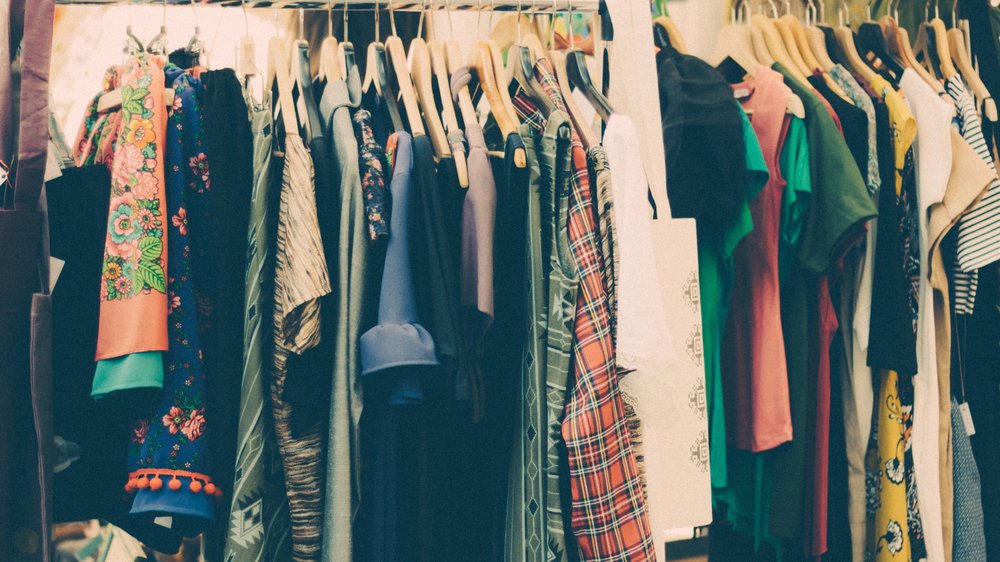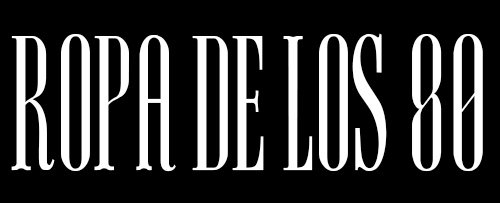
WHAT VINTAGE CLOTHING LOOKS LIKE
There is a general doubt about what is truly considered vintage clothing. As we already mentioned, it must have some age, and it is not only the clothes but also the accessories. The general agreement is that it is clothing from the 1920s to 20 years ago (around 1998).
In the previous years there was a scandal of vintage clothing, more and more people are passionate about this kind of garments. It is important to emphasize that it is not the same inclination as the new clothes that are inspired by these decades.
Recently several have additionally started to take into account that vintage clothes are those that are 10 years old if they are designer pieces. The latter thanks to the fact that numerous well-known and predominant designers have passed away. So it is believed that the clothes they made, even if they are more recent, are vintage.
The criterion of vintage clothing is often confused with old clothes. But, this is the one that is well over 100 years old. Retro clothing, on the other hand, is new, but with a style that evokes the past.
The traditional style is considered contrary to vintage, because it assumes that the pieces are on trend, that they have style beyond the passage of time. In other words, they do not reflect an era, but transcend time. Among other things, the black dress, trench coats, pumps, white shirts or blazers.
Generally, the definition of vintage clothing is very broad. With the passing of each decade, new vintage pieces are added to the vintage style and clothes that were once vintage are now classified as old.
Among other things, a black dress from the 80's is traditional, not vintage, even if it is from decades ago. But, a blazer with broad shoulders from that era is.
HISTORY OF THE VINTAGE TREND
Since the beginning of the First World War, the initiative of vintage clothing or reuse of clothing began to take life. In times of war the economic adversities are recurrent, therefore, the pieces are mended, mended and repaired. They are also passed on from one generation to the next in a family.
Then, at the end of the 20th century there was an increase in the demand for branded clothing. But, at the end of the 80's in the USA, vintage clothing came back, because they wanted to reduce exactly the use of branded clothing.
From there, little by little vintage clothing went from being a subculture to being part of the mainstream or mass civilization. The causes of its use have within the initiative of the sustainable trend and precaution of the environment.
CHARACTERISTICS OF VINTAGE CLOTHING
We are talking about vintage clothing, not a style of dressing. Your style may be using vintage, but vintage clothing is from a different era than today. Modern brands integrate the word vintage into their clothing, this may be rare for many first time buyers.
What you have to remember is that a true vintage item is not going to say vintage on the label.
Vintage clothing can be couture, as we said, but it can also be from popular brands. It can also be used or novelty that was stored, handmade or manufactured.
Vintage clothing is also about fashion and responsible consumption. It is a way to slow down the pace of a fast-paced world, because reusing clothes means less production of new clothes.
Most of the vintage clothing was used before. But a small percentage of pieces were never used, because they were stored. The latter have more value, especially if they have their authentic labels. Some refer to them as new old warehouse (NOS).
Clothing of this style can be commercially produced or handmade.
- You find natural fibers in vintage clothing, such as cotton, linen, wool, cashmere, mohair and angora.
- Synthetic fibers such as polyester, nylon, lycra, acetate, etc. are also available.
- Today it is considered clothing from the late 1990s to about the 40s and 20s.
- The most commonly used patterns are plaid, polka dot, floral and geometric.
REASONS TO PURCHASE AND DRESS IN THIS STYLE
As you will have the chance to talk about, vintage clothing is often confused with other types of pieces, take into account the quality, the exclusivity, the stories behind them and more.
The quality of vintage clothing they say is unattainable. It does not compare to today's clothes, unless they are very expensive, haute couture. This is because the tailoring and fabrics are different. Among other things, before the 70s, and also the 60s, clothes were made to stay longer. Also, polyester was not used as much.
At that stage, quality was more important than quantity. For both financial and cultural reasons. That is why it is not so complicated to find luxury details in vintage clothing.
By wearing vintage clothing you will have the possibility to see the quality, luxury finishes and you will not always have to pay a very expensive price.
When you invest in this kind of clothing you will have the possibility to be sure that you will not walk into an event or party and there will be another person with the same part. Consequently, vintage clothing is exclusive. In addition, the garments have patterns, prints and buttons that are not available anywhere else nowadays.
It is not similar to having a piece of clothing that everyone on the planet can acquire, to using something that no one else on the planet has, or that is very rare. Vintage adepts become real seekers of second-hand clothing goods.
If you enjoy acquiring vintage clothing you have undoubtedly walked through thrift markets, yard sales and vintage stores, so you have delighted in hearing stories from previous owners. Even when you don't have information about a part, you can start to imagine and make one yourself.
HOW TO BUY VINTAGE CLOTHING ONLINE
If you want to buy vintage clothes you can look in prepared stores. You will have the possibility of finding good pieces in second hand stores, but, in many cases they are just old clothes, without a defined style.
In vintage clothing stores you will find collection pieces, plus you will have the chance to talk with the owner about the clothes. This is related to what we have just mentioned about the stories told by the pieces you buy.
If you like pieces from different eras, don't get parameters. But, the most important thing is that you focus on the accessories, that you manage to mix them with current clothes, in this way you will have a vintage touch, instead of putting together several styles.
About sizing in vintage clothing, keep in mind that these have changed quite a bit in previous years. A rule of thumb is that a part from the fifties or sixties is usually more important than recent pieces of the same size.
Some say it is half, i.e., a size 12 from that era is a 6 today. Among other things, a size M in the 70s is similar to an XS in 2010. Also, it should be taken into account that before the 80s obesity was not common, therefore, it is difficult to find clothes in large sizes.
But, as you get closer to this time, the sizes are in line with those of today. This is more or less since the eighties. In addition, he believes that there is always the alternative of changing clothes with a seamstress.
We told you what vintage clothing looks like and the reasons for acquiring and dressing in this style. Do you dare to evaluate this popular inclination? Which decade seems to you to have been the best in terms of clothing and style? Let us know.
